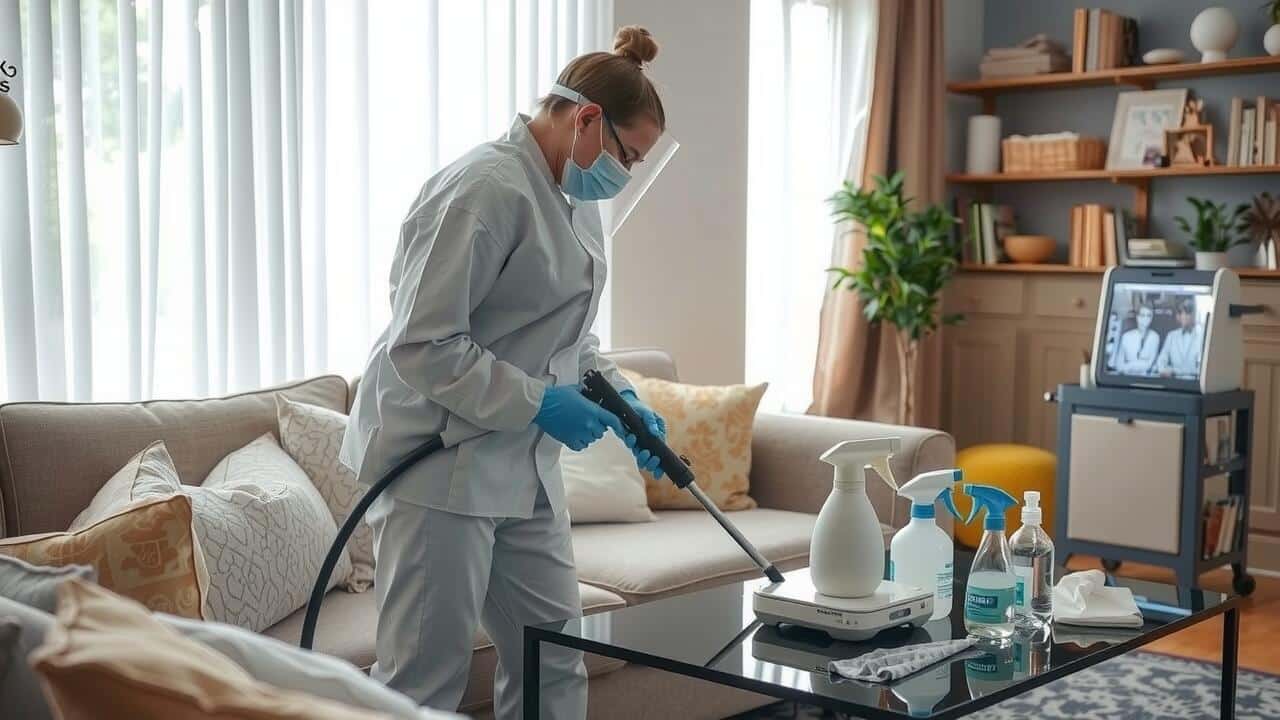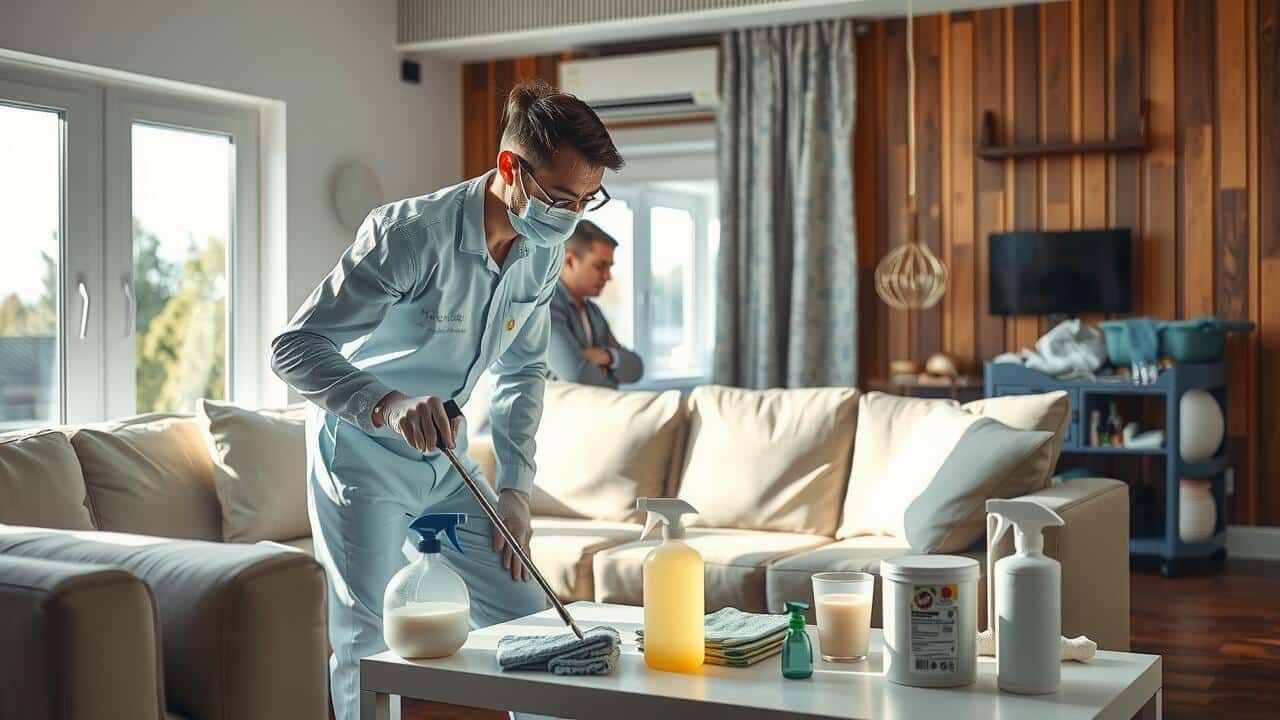
Table Of Contents
Vinegar’s Role in Mold Removal
Vinegar has gained popularity as a natural solution for mold removal due to its antifungal properties. Many homeowners find that its acetic acid content can disrupt mold spores, effectively inhibiting their growth. When applied directly to moldy areas, vinegar can penetrate porous surfaces, allowing it to tackle hidden molds that may not be immediately visible. This makes it particularly useful in spaces like bathrooms and kitchens where moisture levels are high and conducive to mold development.
In the context of home sanitizing, using vinegar can provide a safer alternative to harsh chemical cleaners. It poses less risk to indoor air quality and is generally less harmful to household members, including pets. While it may not eliminate all types of mold, vinegar can diminish mold presence significantly and prevent future infestations when used consistently. Proper application is key, ensuring that the affected area remains damp with vinegar for a sufficient period to maximize its effectiveness.
How It Tackles Fungal Growth
Vinegar’s acetic acid content makes it effective against various types of fungi, including mold. When applied to affected areas, the acid disrupts the cell membranes of mold spores, leading to their demise. This property allows vinegar to serve as a natural option for home sanitizing, especially in damp spaces like kitchens and bathrooms. It can penetrate porous surfaces, helping to eliminate the spores hidden within grout lines or other crevices.
Additionally, vinegar’s antifungal properties extend beyond mere surface cleaning. It creates an environment that is less welcoming to mold growth. Regular application can act as a preventive measure against future infestations, making it a practical choice for households looking to maintain a mold-free atmosphere. Effective use of vinegar can reduce the likelihood of returning fungal growth, thereby enhancing overall home sanitizing efforts.
Safe Surfaces for Vinegar Use
Vinegar is a versatile cleaning agent that can be used safely on many surfaces within the home. It works particularly well on glass, countertops, and appliances, making it ideal for home sanitizing tasks. The acetic acid in vinegar helps to break down grime and dirt, leaving surfaces shiny and fresh. For best results, use white vinegar or apple cider vinegar, as these varieties are less likely to leave residue behind.
However, not all surfaces are suitable for vinegar treatment. It is important to avoid using vinegar on natural stone countertops, such as granite or marble, as the acid can cause damage over time. Additionally, vinegar should not be used on wood surfaces that are not sealed, as it may lead to warping or discoloration. Knowing which surfaces to avoid ensures effective home sanitizing without risking harm to your belongings.
Avoidance of Certain Materials
While vinegar is a popular cleaning agent, it may not be suitable for all surfaces. Avoid using vinegar on natural stone materials such as granite, marble, or limestone. The acidity of vinegar can etch the stone and lead to irreversible damage over time. Additionally, it is best to steer clear of using vinegar on wood surfaces, especially untreated or waxed wood, as the liquid can cause warping and degradation.
For effective home sanitizing, it’s crucial to recognize materials that don’t respond well to vinegar. Electronic screens and certain types of fabrics may also suffer if exposed to the acidity. Opt for alternative cleaners formulated specifically for these surfaces instead. This precaution helps maintain the integrity of your belongings while still achieving the desired cleanliness.
Best Practices for Using Vinegar as a Cleaner
For effective home sanitizing, using vinegar requires a few best practices that enhance its cleaning capabilities. It is essential to use undiluted white vinegar when tackling tough stains or odors. This concentrated form allows for better penetration and increased effectiveness against dirt and grime. Additionally, spraying vinegar directly onto affected areas and allowing it to sit for several minutes can break down residues and improve overall cleanliness.
When utilizing vinegar for home sanitizing, ensure to pair it with the right tools. Microfiber cloths or sponges work best for application, as they capture dirt while being gentle on surfaces. Avoid using vinegar on natural stone, such as granite or marble, because its acidity can cause damage. Always test vinegar solutions on less visible areas first to prevent any potential adverse reactions and to confirm compatibility with different materials.
Tips for Effective Application
For effective application of vinegar in home sanitizing, proper dilution is key. A common mix involves equal parts of vinegar and water, making it versatile for various surfaces. Always choose a clean spray bottle to avoid any contamination from previous cleaners. When applying, focus on small sections at a time to ensure thorough coverage and effectiveness.
Timing is crucial when using vinegar for home sanitizing. Allow the solution to sit on the surface for at least 10 minutes before wiping it away. This dwell time enhances its ability to tackle bacteria and other pathogens. It is also helpful to follow up with a rinse using clean water on surfaces like countertops or cutting boards to avoid any aftertaste, particularly in food preparation areas.
FAQS
Does vinegar sanitize surfaces?
Vinegar can help reduce some bacteria and germs on surfaces, but it is not considered a true sanitizer or disinfectant. It may lower the number of pathogens, but for killing a wide range of harmful microorganisms, stronger disinfectants are recommended.
Can vinegar effectively remove mold?
Yes, vinegar is effective in tackling mold growth. Its acidic properties can help break down and eliminate mold on various surfaces, making it a popular choice for mold removal.
Is vinegar safe for all surfaces?
Vinegar is generally safe for many hard surfaces, but it should be avoided on natural stone, waxed surfaces, and certain types of wood as it can cause damage or strip finishes.
What is the best way to use vinegar as a cleaner?
For effective cleaning, spray undiluted white vinegar directly onto the surface, let it sit for a few minutes to penetrate, and then wipe clean with a cloth. This method works well for general cleaning and mold removal.
Can I mix vinegar with other cleaning products?
It is not recommended to mix vinegar with bleach or hydrogen peroxide, as this can create harmful chemical reactions. Always use vinegar on its own or with water for safe cleaning.
